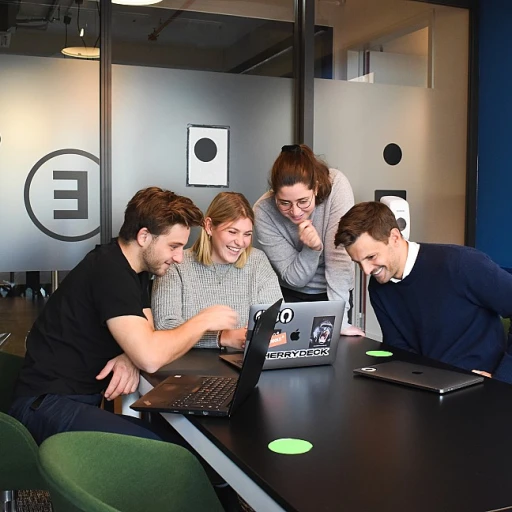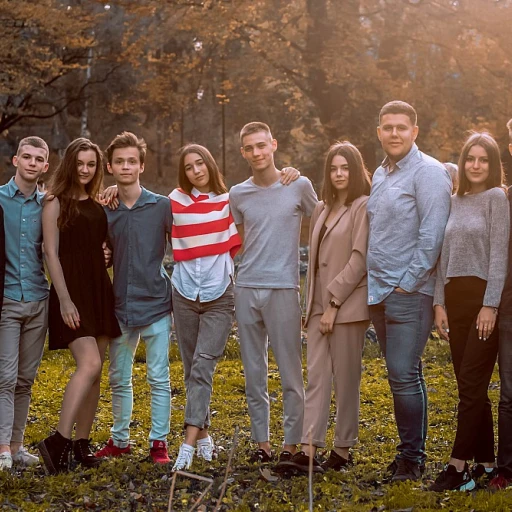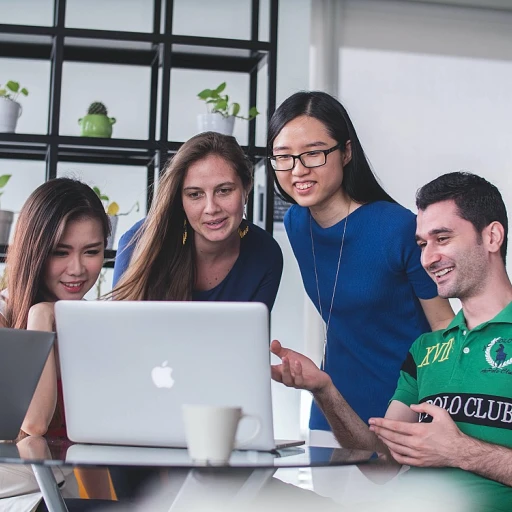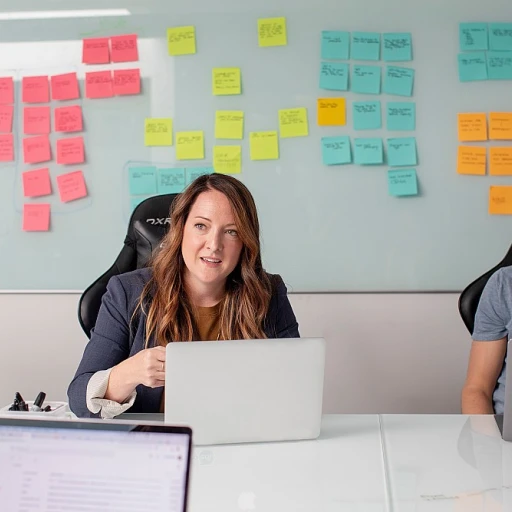
Defining SLO 1 in Instructional Technology
Pinpointing the Essentials of SLO 1 in Instructional Contexts
In the realm of instructional technology, understanding the fundamentals of SLO (Student Learning Outcomes) is crucial. SLO 1, in particular, serves as a cornerstone in shaping how we approach student learning and progress. It is a standard reflection of how learning objectives are tailored to enhance student learning. As educational systems evolve towards more technology-centric methods, the role of SLOs becomes even more prominent.
Defining SLO 1 involves a mixture of academic rigour and practical application. This artifact of educational strategies integrates diverse media and instructional methods to communicate key learning objectives. In practical terms, it addresses the intended outcomes for students as they engage with instructional content. By anchoring outcomes to student-related benchmarks, educators can undertake a more comprehensive review of student progress and respond to individual learning needs more precisely.
The integration of technology allows for a broadened scope in how these outcomes are implemented and assessed, a matter that is highly debated in educational circles. There’s an ongoing debate paper on the efficacy of traditional methods versus modern instructional technology approaches, highlighting perspectives like those in the Clark-Kozma debate. The debate centers on how media and technology impact learning outcomes, with multiple sources providing insights into this dynamic field.
For educators, defining SLO 1 also means crafting a framework that supports career plans and growth, accommodating diverse learning environments. It's about synthesizing issues and trends in instructional strategies to provide the most effective learning experience. Robust student learning involves not just the delivery of content, but the strategic alignment of learning objectives with student capabilities and aspirations.
It is crucial to synthesize these issues by engaging with multiple sources and perspectives as outlined in the introduction to the impact cycle for continuous learning. This approach empowers educators to adapt to instructional trends, continually refining and enhancing how learning is facilitated and assessed for every student.
The Role of SLO 1 in Enhancing Learning Outcomes
Enhancing Learning Outcomes with SLO 1
In the realm of instructional technology, SLO 1 plays a pivotal role in shaping the educational landscape. By focusing on specific learning objectives, SLO 1 helps educators tailor their instructional strategies to meet the diverse needs of students. This approach not only aligns with the standards of instructional technology but also fosters a more personalized learning experience.
One of the primary benefits of SLO 1 is its ability to enhance learning outcomes. By clearly defining what students will achieve, educators can create targeted assignments and assessments that directly measure these objectives. This clarity helps students understand the purpose behind their learning activities, leading to greater engagement and motivation.
Moreover, SLO 1 encourages the use of multiple sources and media to support student learning. This aligns with the ongoing debate in the field of instructional technology, often referred to as the Clark-Kozma debate, which discusses the impact of media on learning outcomes. By integrating various instructional media, educators can cater to different learning styles and preferences, ultimately improving student performance.
As educators synthesize issues and trends in instructional technology, they must consider the challenges and opportunities presented by SLO 1. By reflecting on these issues, educators can develop strategies that not only address current challenges but also anticipate future trends in the field.
For those interested in further exploring how SLO 1 can be leveraged to enhance learning outcomes, consider reading about mastering CRO for eCommerce success with CXL. This resource provides insights into optimizing learning strategies for better results.
Challenges in Implementing SLO 1
Overcoming Barriers to Successful SLO Integration
Implementing SLO 1 within the instructional technology context can present several challenges that educational institutions and instructors need to navigate with care. Understanding and addressing these challenges is crucial for optimizing learning outcomes and ensuring that students achieve their set learning objectives. Firstly, one pressing issue is the alignment of SLOs with technology standards. Without proper alignment, educators may find it difficult to synthesize issues in instructional settings, leading to confusion and less effective teaching strategies. Aligning SLOs with the technology standards requires careful planning and reflection on the instructional artifacts being used. Another significant challenge revolves around the ongoing debate around technology's role in education. The "media debate," often highlighted by juxtaposing views from the Clark-Kozma spectrum, raises questions about whether technology alone can foster student learning and enhance educational outcomes. Addressing these philosophical divides requires evidence-based discussions that focus on the impactful integration of instructional media. Additionally, overcoming resistance to change among educators is crucial. Educators may struggle to incorporate new trends in instructional techniques into their teaching repertoire without adequate training and support. Professional development opportunities aimed at building capacity and understanding instructional standards play a pivotal role in tackling resistance to change. Moreover, incorporating feedback mechanisms to continually assess the effectiveness of SLOs is essential. Instructors need to examine student growth and engagement through various assessments and student artifacts, adapting strategies as needed to meet evolving learning objectives. Staying informed about the latest issues and trends in instructional technology can further aid instructors in refining their approaches. For an in-depth exploration of strategies to craft effective social-emotional IEP goals and enhance the holistic educational experience, visit this impactful resource.Best Practices for SLO 1 in Continuous Learning
Implementing Best Practices for Effective SLO 1 Deployment
In the realm of instructional technology, integrating SLO 1 effectively requires a strategic approach that ensures successful learning outcomes. This section explores some best practices that can be pivotal in enhancing SLO 1's impact on continuous learning environments. 1. Aligning SLO with Learning ObjectivesStart by clearly syncing SLO 1 with your learning objectives. Establishing a direct link between what students are assessed on and the educational goals they strive to meet ensures alignment and provides clearer pathways for student growth. This alignment helps in maintaining the standard reflection of educational goals and sets a clear pathway for progression in students' learning experiences. 2. Utilizing Multiple Sources for Insights
Harness multiple sources to continually refine the implementation of SLO 1. By drawing from case studies, artifact medt, and instructional technology papers, educators can gather diverse perspectives and develop insights that synthesize issues surrounding SLO implementation across educational settings. 3. Embracing Technology and Media in Instruction
Leverage technology and media to support instructional strategies that enhance SLO practices. Integrating digital platforms and resources into the teaching process can create dynamic learning environments that resonate better with students will to learn and engage actively. Adapting media effectively supports the achievement of personalized learning outcomes. 4. Regular Evaluation and Adaptation
Continuously evaluate the effectiveness of SLO 1 through regular assessments and reflective practices. Instructors should be prepared to adapt their methods in response to student feedback and the varying efficacy of teaching interventions. This practice can play a substantial role in troubleshooting and addressing issues instructional plans may encounter. 5. Encouraging Active Student Participation
Promote active participation from students in the learning process. Encouraging them to engage in debates, such as the famed Clark vs. Kozma debate, or assignments that involve artifact analysis, will provide a platform for students to apply standard reflection and validate their understanding. This strategy fosters greater student responsibility toward their education and improves critical thinking skills. By incorporating these best practices, educators can enhance the deployment of SLO 1 in ways that are not only effective but also adaptable to emerging trends in the educational landscape. Addressing issues trends can open more opportunities for continuous improvement and career advancements, benefitting both educators and students alike.
Case Studies: SLO 1 in Action
Real-World Applications of SLO 1 in Learning Environments
Incorporating SLO 1 into instructional technology strategies can significantly transform the educational experiences of students. The goal is not only to align with established standards but to ensure effective student learning outcomes. Understanding how SLO 1 functions in practical settings offers valuable insights into its potential for enhancing educational experiences.
In classrooms where technology plays a crucial role, SLO 1 serves as an integral artifact, guiding both the instructor’s approach and the student’s learning journey. By applying this standard, educators can facilitate more personalized learning experiences that cater to various learning styles and needs, which ultimately leads to improved outcomes.
An interesting aspect of SLO 1 is its capacity to be tailored to individual and group assignments. The ability to synthesize issues and incorporate multiple sources allows students to engage deeply with the content, thereby fostering critical thinking and growth.
From creating debate papers on topics such as the media's role in education to evaluating instructional methods, SLO 1 encourages learners to meet diverse learning objectives. This engenders a comprehensive understanding which is crucial for students as they prepare for their future career plans.
Despite its benefits, implementing SLO 1 is not without challenges. Instructors often face issues related to balancing standard reflection with innovative instructional technology practices. Debates persist around traditional teaching methods compared with modern digital media, echoing the enduring Clark-Kozma discourse surrounding technology's role in education.
However, these ongoing debates and issues serve as catalysts for continuous growth and adaptation. Understanding trends in instructional technology, educators can address challenges effectively, ensuring that students will achieve their desired learning outcomes.












